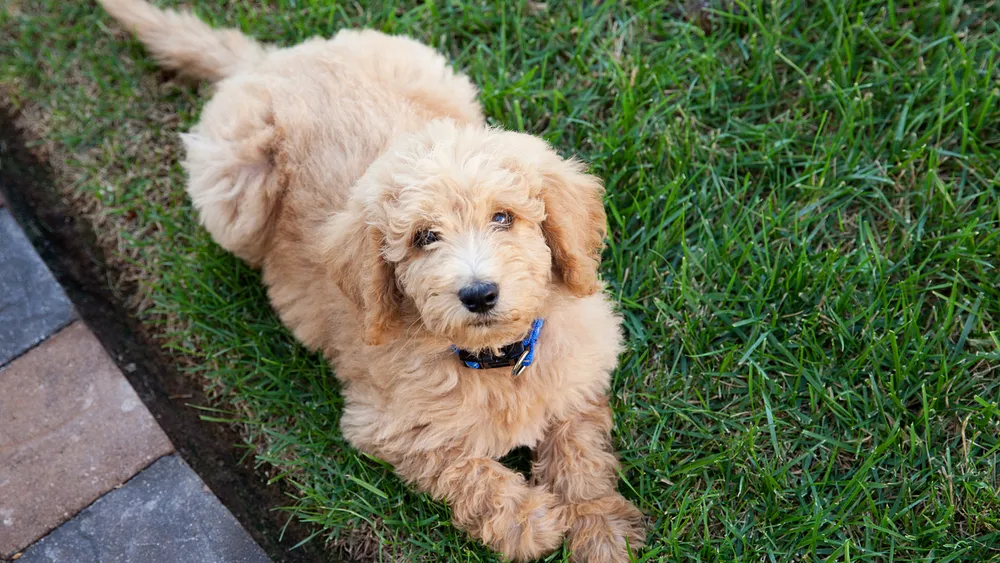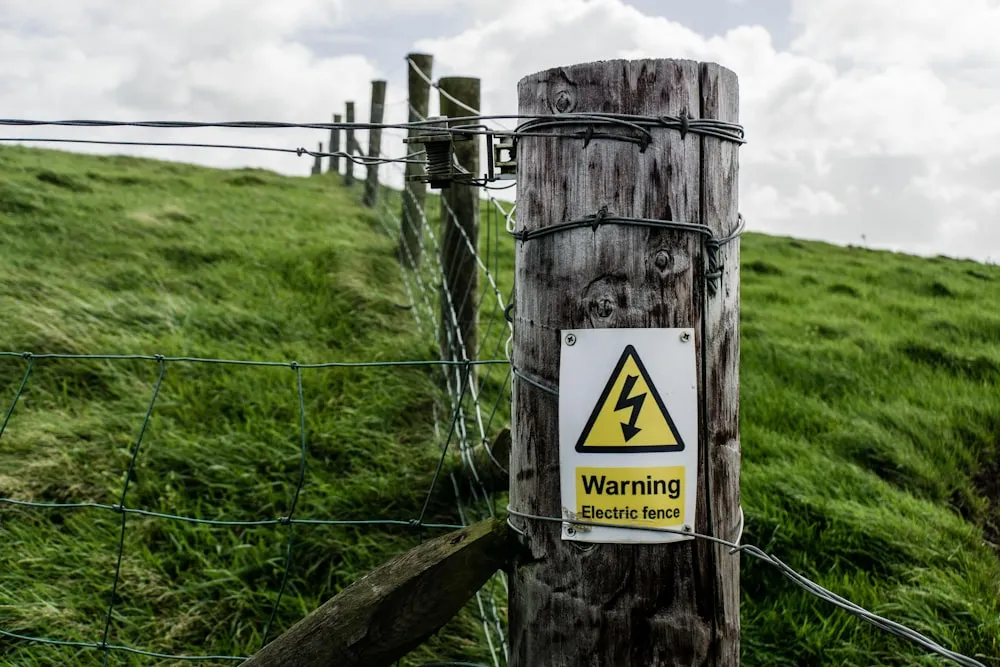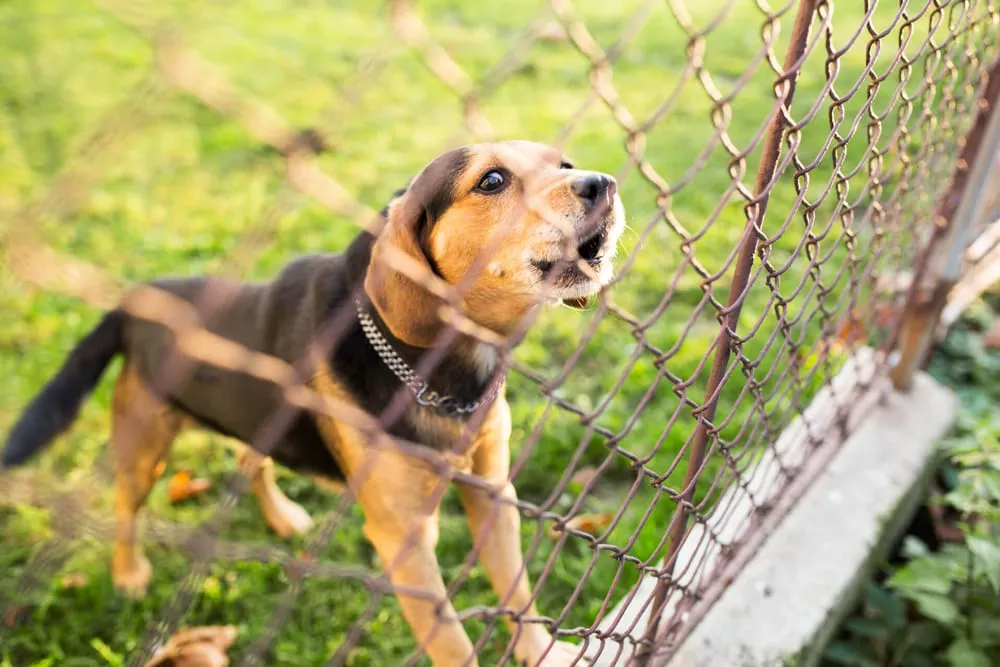Many people dream of having a furry friend to come home to, but not everyone has a fenced-in yard. The question arises, can you have a dog without a fence? The answer is yes, but it requires careful planning and consideration.

One of the first things to consider is the breed of dog. Some breeds are more suited for life without a fence than others. For example, a small lap dog may not need as much space to run around as a large hunting dog. Additionally, some breeds have a higher prey drive and may be more likely to run off without a fence. It's important to research and choose a breed that fits your lifestyle and living situation.
Another factor to consider is the dog's exercise needs. Without a fence, it's important to make sure your dog gets enough exercise through walks, runs, or trips to a dog park. This not only helps keep your dog healthy and happy, but it also helps prevent destructive behavior that can result from boredom. With proper exercise and attention, a dog can thrive without a fence.
Understanding Dog Needs and Behavior
Dogs are social animals that require attention, affection, and stimulation to thrive. Understanding their needs and behavior is crucial to providing a happy and healthy life for your furry friend. In this section, we will discuss some important factors to consider when owning a dog without a fence.

Canine Freedom and Safety
Dogs love to explore and roam freely, but it's important to keep them safe. Without a fence, dogs are at a higher risk of getting lost, hit by a car, or injured by other animals. It's crucial to supervise your dog at all times and ensure they are always within your sight. Additionally, make sure your dog is wearing identification tags and is microchipped in case they do get lost.
Exercise and Stimulation Requirements
All dogs require regular exercise and mental stimulation to stay healthy and happy. Without a fence, it's important to provide your dog with enough exercise and stimulation to prevent boredom and destructive behavior. Daily walks, runs, and playtime are essential for all breeds, but some breeds require more exercise than others. For example, a high-energy breed like a Border Collie may need several hours of exercise and stimulation each day to prevent destructive behavior.
Breed-Specific Considerations
Different dog breeds have different needs and behaviors. When owning a dog without a fence, it's important to consider your dog's breed-specific requirements. For example, a breed with a high prey drive like a Vizsla may be more likely to chase after small animals, so it's important to supervise them closely when outside. Breeds like Pugs may be more prone to separation anxiety, so providing plenty of attention and mental stimulation is crucial.
In conclusion, owning a dog without a fence is possible, but it requires careful consideration of your dog's needs and behavior. Providing enough exercise, supervision, and mental stimulation is crucial for a happy and healthy life for your furry friend.
Training and Behavior Modification
When it comes to having a dog without a fence, training and behavior modification are key to ensuring your dog stays safe and doesn't wander off. Here are some techniques and methods that can be used:
Boundary Training Techniques
One effective way to train your dog to stay within a certain area is to use visual markers or physical barriers. This can be achieved by placing flags or cones along the boundary, or by using a leash or rope to create a physical barrier. Over time, the dog will learn to associate these markers with the boundary and will stay within it.
Positive Reinforcement Methods
Positive reinforcement is a powerful tool in dog training. Rewarding your dog with treats, praise, or playtime when they exhibit good behavior can help reinforce that behavior and make it more likely to occur in the future. This can be especially useful when training your dog to stay within a certain area or to come when called.
Dealing with Distractions and Dangers
Even with training, distractions and dangers can still pose a risk to your dog's safety. It's important to be aware of potential hazards in your area, such as busy roads or wildlife. When training your dog, gradually introduce distractions and distractions to help them learn to stay focused and calm in these situations.
In conclusion, with the right training and behavior modification techniques, it is possible to have a dog without a fence. By using visual markers and physical barriers, positive reinforcement methods, and being aware of potential distractions and dangers, you can help ensure your dog stays safe and happy while enjoying their freedom.
Safe Alternatives to Fencing
If you want to have a dog but don't have a fence, there are several safe alternatives to fencing that you can consider. Here are some options that you can explore:
Leash and Tether Solutions
One of the simplest and most effective ways to keep your dog safe and secure is to use a leash or a tether. A leash is a great tool for walking your dog, while a tether can be used to keep your dog in a specific area. You can use a long line or a rope to give your dog more freedom to move around, but make sure that you supervise your dog at all times and don't leave them unattended.
Invisible and Electric Fences

Invisible and electric fences are another option that you can consider. These fences use a collar that emits a static shock or a warning tone when your dog gets too close to the boundary. While these fences can be effective in keeping your dog contained, they are not suitable for all dogs and can be expensive to install.
Exercise Pens and Dog Runs
Exercise pens and dog runs are another alternative to fencing that you can consider. These are enclosed areas that provide your dog with a safe and secure space to play and exercise. You can use a cable or a trolley to give your dog more freedom to move around, but make sure that the area is secure and that your dog cannot escape.
Overall, there are several safe alternatives to fencing that you can consider if you want to have a dog. Whether you choose to use a leash, invisible fence, or exercise pen, make sure that you supervise your dog at all times and provide them with plenty of opportunities for exercise and socialization.
Enhancing Indoor and Outdoor Spaces
Creating a Dog-Friendly Yard
Having a dog without a fence can be challenging, but with a few adjustments, you can create a dog-friendly yard that will keep your furry friend safe and happy. One of the best ways to improve your yard is by adding a dog kennel or an outdoor dog kennel. This will give your dog a designated area to play and exercise, and it will also prevent them from escaping or digging in the yard.
Toys are another essential aspect of creating a dog-friendly yard. Dogs love to play, and having a variety of toys available will keep them entertained and help prevent destructive behavior. Exercise pens are also a great option for dogs that are prone to escaping or digging. These pens can be customized to fit your yard's size and shape, and they provide a safe and secure space for your dog to play.
If you have a pool or other water feature in your yard, it's crucial to take precautions to keep your dog safe. Dogs can easily drown if left unsupervised near water, so it's essential to teach your dog how to swim and never leave them unattended near the pool.
When it comes to fencing, welded wire fencing or vinyl fencing is the best option for keeping your dog contained. These types of fences are durable and can withstand most attempts to escape. However, it's important to ensure that the fence is tall enough to prevent your dog from jumping over it.
Indoor Safety and Enrichment
While outdoor spaces are essential for dogs, indoor spaces are equally important. Dogs need a safe and comfortable space to rest and relax, and it's essential to create an environment that is both enriching and safe.
Doggie doors are a great way to give your dog access to the outdoors while keeping them safe inside. However, it's important to ensure that the door is secure and that your dog cannot escape through it.
To prevent destructive behavior indoors, it's important to provide your dog with plenty of toys and enrichment activities. Puzzle toys and treat-dispensing toys are excellent options for keeping your dog mentally stimulated and preventing destructive behavior.
It's also important to be aware of potential hazards inside your home. Some plants can be toxic to dogs, so it's essential to research which plants are safe and which should be avoided. Additionally, it's important to keep hazardous materials, such as cleaning supplies and medications, out of reach of your dog.
By making a few adjustments to both your indoor and outdoor spaces, you can create a safe and enriching environment for your dog without the need for a fence.
Community and Legal Considerations
When considering getting a dog without a fence, it is important to take into account the community and legal considerations. This includes neighbor relations, local laws, preventing theft, and escapes.
Neighbor Relations and Local Laws
It is important to maintain good relations with neighbors when having a dog without a fence. Some neighbors may be concerned about the safety of their pets or children, and it is important to respect their boundaries. Additionally, many cities and towns have local laws regarding pets, such as leash laws and noise ordinances. It is important to be aware of these laws and to follow them to avoid any legal issues.
Preventing Theft and Escapes
When having a dog without a fence, it is important to take measures to prevent theft and escapes. Dogs that are not properly contained can be more vulnerable to theft, and it is important to take steps to prevent this from happening. This can include keeping the dog inside when no one is home, or using a wireless dog fence or other technology to keep the dog contained.
In addition to theft, dogs without a fence can also be more prone to escapes. This can happen if the dog is distracted or chased by another animal, or if the dog is a Houdini and can escape from any containment system. To prevent escapes, it is important to supervise the dog when outside, and to use a leash or other containment system when necessary.
Overall, while it is possible to have a dog without a fence, it is important to consider the community and legal considerations. By being knowledgeable about local laws and taking measures to prevent theft and escapes, dog owners can ensure that their pets are safe and happy.
Cost Considerations and DIY Options
When it comes to having a dog without a fence, there are several cost considerations and DIY options that can help keep your furry friend safe and secure. Here are some budget-friendly fencing alternatives and DIY fencing and containment solutions that can help ease stress and customize your dog's outdoor space.

Budget-Friendly Fencing Alternatives
If you're on a tight budget, there are several fencing alternatives that can work just as well as traditional fencing. One option is to use flags to mark the boundaries of your yard. This can help your dog understand where they are allowed to roam and can also be a great visual cue for other people in your neighborhood.
Another option is to use natural barriers such as hedges or shrubs to create a boundary around your property. This can be a great way to add some greenery to your yard while also keeping your dog contained.
DIY Fencing and Containment Solutions
If you're handy with tools, there are several DIY fencing and containment solutions that can be both cost-effective and customizable. One option is to build a wooden fence using pre-made fence panels. This can be a great way to create a sturdy and secure boundary around your property without breaking the bank.
Another option is to use portable fencing panels that can be easily moved and customized to fit your specific needs. These panels can be made from a variety of materials such as wood or metal and can be painted or stained to match the look of your home.
Overall, there are several cost-effective and customizable options for having a dog without a fence. By considering these budget-friendly alternatives and DIY solutions, you can create a safe and secure outdoor space for your furry friend to enjoy.
Frequently Asked Questions

- Q1: What are effective alternatives to traditional fencing for keeping a dog in the yard?
- There are several alternatives to traditional fencing that can be effective in keeping a dog in the yard. These include invisible or wireless dog fences, electric fences, and kennels. Each option has its own advantages and disadvantages, so it is important to research and choose the option that best suits your needs and your dog's behavior.
- Q2: How does an invisible or wireless dog fence work to contain pets?
- An invisible or wireless dog fence is a system that uses a buried wire or a wireless signal to create a boundary around the yard. The dog wears a special collar that emits a warning sound and a mild electric shock when it approaches the boundary. Over time, the dog learns to associate the warning sound with the boundary and stays within the designated area.
- Q3: Can I ensure my dog's safety outdoors if I don't have a physical fence?
- Yes, it is possible to ensure your dog's safety outdoors even if you don't have a physical fence. Invisible or wireless dog fences, electric fences, and kennels are all viable options. It is important to consider your dog's behavior and temperament when choosing a solution.
- Q4: Are there any temporary solutions for restraining a dog in an unfenced area?
- Yes, there are temporary solutions for restraining a dog in an unfenced area. These include portable fences, tie-outs, and stake-out systems. It is important to supervise your dog when using these temporary solutions to ensure their safety.
- Q5: What measures can be taken to prevent a dog from wandering off a farm?
- To prevent a dog from wandering off a farm, it is important to provide proper training and supervision. Invisible or wireless dog fences, electric fences, and kennels can also be effective solutions. Additionally, it is important to ensure that the dog has plenty of exercise and mental stimulation to reduce the likelihood of wandering.
- Q6: How high should a fence be to securely contain most dog breeds?
- The height of a fence needed to securely contain most dog breeds depends on the breed and the individual dog's behavior. Typically, a fence that is at least 6 feet tall is sufficient for most breeds. However, some breeds are known to be skilled jumpers and climbers, so it may be necessary to install a higher fence or to add additional measures such as coyote rollers or angled fencing.




